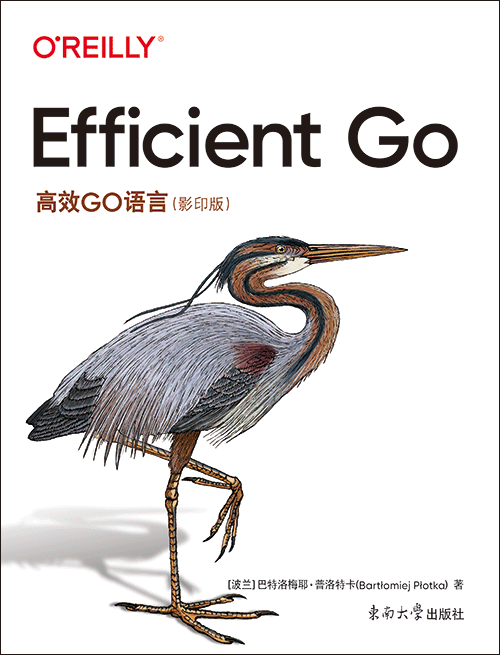高效GO语言(影印版)
出版时间:2023年03月
页数:476
“本书精彩且富有见地,改变了人们对于Go软件效率的看法。你会学到如何在优化代码库和识别可优化模式的同时进行数据驱动的评估。作者想做的就是减轻你的学习负担,让你一敲代码就忍不住关心代码的效率!”
——Saswata Mukherjee
Red Hat工程师
随着技术的进步、市场的快速发展和系统复杂性的日益增加,软件工程师倾向于跳过软件效率这个令人不舒服的话题。然而,要想节省资金并确保业务成功,战术性的、由可观测性驱动的性能优化对于所有产品来说都是至关重要的。
通过本书,任何工程师都可以轻松学会如何有效、专业且无压力地提高软件效率。作者Bartlomiej Plotka讲解了提高系统速度和降低资源消耗所需的工具和知识。本书将指导你使用Go实现更好的日常工作效率。此外,书中大多数内容与语言无关,以便你将小而有效的习惯带入编程或产品管理周期。
本书将教会你如何:
● 阐明并协商效率目标
● 优化各个层面的效率
● 有效利用CPU和内存等公共资源
● 通过Prometheus、Jaeger、Parca等开源项目,使用指标、日志记录、跟踪和(连续)剖析等可观测性信号评估效率
● 应用go test、pprof、benchstat和k6等工具创建可靠的微观和宏观基准
● 高效地使用Go及其特性,如切片、泛型、goroutines、分配语义、垃圾收集等
——Saswata Mukherjee
Red Hat工程师
随着技术的进步、市场的快速发展和系统复杂性的日益增加,软件工程师倾向于跳过软件效率这个令人不舒服的话题。然而,要想节省资金并确保业务成功,战术性的、由可观测性驱动的性能优化对于所有产品来说都是至关重要的。
通过本书,任何工程师都可以轻松学会如何有效、专业且无压力地提高软件效率。作者Bartlomiej Plotka讲解了提高系统速度和降低资源消耗所需的工具和知识。本书将指导你使用Go实现更好的日常工作效率。此外,书中大多数内容与语言无关,以便你将小而有效的习惯带入编程或产品管理周期。
本书将教会你如何:
● 阐明并协商效率目标
● 优化各个层面的效率
● 有效利用CPU和内存等公共资源
● 通过Prometheus、Jaeger、Parca等开源项目,使用指标、日志记录、跟踪和(连续)剖析等可观测性信号评估效率
● 应用go test、pprof、benchstat和k6等工具创建可靠的微观和宏观基准
● 高效地使用Go及其特性,如切片、泛型、goroutines、分配语义、垃圾收集等
- Preface
- 1. Software Efficiency Matters
- Behind Performance
- Common Efficiency Misconceptions
- The Key to Pragmatic Code Performance
- Summary
- 2. Efficient Introduction to Go
- Basics You Should Know About Go
- Advanced Language Elements
- Is Go “Fast”?
- Summary
- 3. Conquering Efficiency
- Beyond Waste, Optimization Is a Zero-Sum Game
- Optimization Challenges
- Understand Your Goals
- Got an Efficiency Problem? Keep Calm!
- Optimization Design Levels
- Efficiency-Aware Development Flow
- Summary
- 4. How Go Uses the CPU Resource (or Two)
- CPU in a Modern Computer Architecture
- Assembly
- Understanding Go Compiler
- CPU and Memory Wall Problem
- Schedulers
- When to Use Concurrency
- Summary
- 5. How Go Uses Memory Resource
- Memory Relevance
- Do We Have a Memory Problem?
- Physical Memory
- OS Memory Management
- Go Memory Management
- Summary
- 6. Efficiency Observability
- Observability
- Example: Instrumenting for Latency
- Efficiency Metrics Semantics
- Summary
- 7. Data-Driven Efficiency Assessment
- Complexity Analysis
- The Art of Benchmarking
- Reliability of Experiments
- Benchmarking Levels
- Summary
- 8. Benchmarking
- Microbenchmarks
- Tips and Tricks for Microbenchmarking
- Macrobenchmarks
- Common Macrobenchmarking Workflows
- Summary
- 9. Data-Driven Bottleneck Analysis
- Root Cause Analysis, but for Efficiency
- Profiling in Go
- Capturing the Profiling Signal
- Common Profile Instrumentation
- Tips and Tricks
- Summary
- 10. Optimization Examples
- Sum Examples
- Optimizing Latency
- Optimizing Memory Usage
- Optimizing Latency Using Concurrency
- Bonus: Thinking Out of the Box
- Summary
- 11. Optimization Patterns
- Common Patterns
- The Three Rs Optimization Method
- Don’t Leak Resources
- Pre-Allocate If You Can
- Overusing Memory with Arrays
- Memory Reuse and Pooling
- Summary
- Next Steps
- A. Latencies for Napkin Math Calculations
- Index
书名:高效GO语言(影印版)
作者:Bartlomiej Plotka 著
国内出版社:东南大学出版社
出版时间:2023年03月
页数:476
书号:978-7-5766-0659-1
原版书书名:Efficient Go
原版书出版商:O'Reilly Media
The animal on the cover of Efficient Go is a purple heron (Ardea purpurea). There is a wide variety of subspecies of these herons, and they are occasionally confused with their larger relative, the gray heron.
Purple herons are recognized by their long bills and necks, as well as by their narrow bodies and wings. Light grayish-purple feathers cover the majority of their bodies with some areas of black, chestnut brown, and white throughout. Their long, snakelike neck is brown with black stripes running down the sides. Black feathers crown their head, belly, and tail tip. Long legs allow them to wade through water and help them see from higher vantage points.
They can be found across the globe in temperate and tropical Europe, Asia, and Africa. While they favor freshwater and tall reed beds, they can also be found living in sedge beds, mangroves, brackish water, swamps, rice fields, rivers, lake shores, and coastal mudflats. They prefer areas covered with thick vegetation and are more commonly seen flying rather than nestled into their habitat.
Water is key to the survival of purple herons, as their primary diet is small-tomedium-sized fish. Insects (beetles, locusts, and dragonflies) also provide ample nourishment, as well as the occasional frog, salamander, or small mammal.
Purple herons are recognized by their long bills and necks, as well as by their narrow bodies and wings. Light grayish-purple feathers cover the majority of their bodies with some areas of black, chestnut brown, and white throughout. Their long, snakelike neck is brown with black stripes running down the sides. Black feathers crown their head, belly, and tail tip. Long legs allow them to wade through water and help them see from higher vantage points.
They can be found across the globe in temperate and tropical Europe, Asia, and Africa. While they favor freshwater and tall reed beds, they can also be found living in sedge beds, mangroves, brackish water, swamps, rice fields, rivers, lake shores, and coastal mudflats. They prefer areas covered with thick vegetation and are more commonly seen flying rather than nestled into their habitat.
Water is key to the survival of purple herons, as their primary diet is small-tomedium-sized fish. Insects (beetles, locusts, and dragonflies) also provide ample nourishment, as well as the occasional frog, salamander, or small mammal.
购买选项
